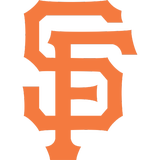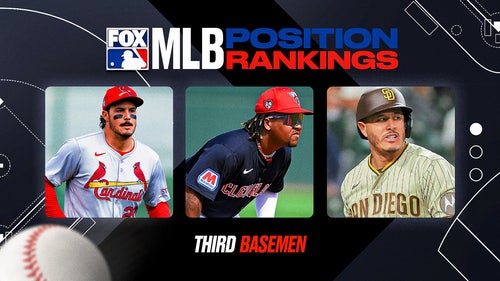
The Chicago Cubs' first challenge is the San Francisco Giants' even-year magic
Thanks to Madison Bumgarner's latest dose of October heroics on Wednesday night, it's the Giants' Even-Year Voodoo that will attempt to sustain the Cubs' Curse of the Billy Goat—or something like that. The Cubs' long-anticipated quest to break their championship-free spell gets its next test against a franchise that has won 11 straight postseason series dating back to 2010 (tying the 1998–2001 Yankees, if you consider the ’14 and ’16 Wild Card Games as series, which is debatable). While it may not have the easy hook of the NLCS rematch that a pairing with the Mets would have brought, this matchup is full of faces familiar to October baseball, led by a pair of the game's top managers in Joe Maddon and Bruce Bochy.
The Cubs are without glaring weakness. Their offense is the league's most potent once you adjust for ballpark, is dangerous against both righties and lefties, has few places for an opposing pitcher to hide and boasts a deep bench for Maddon to use to exploit matchups that go beyond basic lefty-righty situations. Their rotation is the deepest of any postseason team, featuring last year's Cy Young winner, Jake Arrieta; the league's top two finishers in ERA, Kyle Hendricks and Jon Lester; and a battle-tested starter with two World Series rings, John Lackey (of course, Lester has two himself). The bullpen, meanwhile, has been significantly bolstered by the late July addition of Aroldis Chapman.
Ever since they were swept out of last year's NLCS by the Mets and went on their offseason spending spree, the Cubs have been expected to go further this year, becoming the favorites to win it all—to deliver the franchise’s first pennant since 1945 and first championship since 1908. A 47–20 start that put them in sight of historically significant win totals only upped the ante, but they cooled off to finish 103–58.
It's important to remember that the current playoff format hardly guarantees a powerhouse’s march through the postseason, and in fact appears designed to prevent it. From 1995—the first postseason with a wild-card team—to 2015, 22 teams won 100 games, but only two of them won the World Series (the 1998 and 2009 Yankees), and just six won pennants (the '95 Indians, '99 Braves, '03 Yankees and '04 Cardinals were the others). What's more, the teams with the best record in baseball have won just four World Series in that span: the aforementioned Yankees plus the 2004 and '07 Red Sox. The best run differential—the Cubs outscored their opposition by 252 runs—won't take you any further; the 1998 Yankees, 2002 Angels, and '07 and '13 Red Sox are the only leaders who won it all in the wild-card era.
The Cubs shouldn't need to be reminded that the league’s top seed can be upset by the wild-card winner, as they did just that to the Cardinals last year—the fourth time that’s happened since the 2012 format change, with the '14 Giants (over the Nationals) even winning the World Series. Perhaps it’s all a damning indictment of the expanded playoff format, but clearly the industry prefers this type of anything-can-happen tournament, so buckle up. Nothing is automatic, even for the league's elite.

The Cubs had the majors' stingiest rotation, with a 2.96 ERA; the jump to the next-lowest team in the NL (the Nationals at 3.60) is almost as big as that from second to sixth (the Marlins’ 4.32). The NL had 13 starters who qualified for the ERA title while preventing runs at a clip that was 15% better than average; the aforementioned Cubs' front four all fit that description, with the Mets, Giants and Nationals as the only other teams with two. The story is similar when it comes to strikeout rates of at least 7.88 per nine (league average): The Cubs have four of the 16 qualified starters, and the Giants and Nationals are the only other teams with two. Oh, and the Cubs' rotation also threw more innings than any NL team (989) and was the only one with a quartet of 180-inning studs.
Maddon has lined up his rotation with Lester starting Friday's opener opposite Johnny Cueto, with Hendricks (presumably against Jeff Samardzija) in Game 2, Arrieta (likely against Bumgarner) in Game 3 and Lackey (likely against Matt Moore) in Game 4. As Maddon noted, Hendricks and Lester had two of the league’s three lowest ERAs at home (1.32 and 1.74, respectively). Arrieta and Lackey both had better ERAs at home as well, but the former's 3.59 mark on the road was 10th in the league.
As for their bullpen, the unit's 3.56 ERA ranked fourth in the league, and its 9.9 strikeouts per nine was tops. Chicago was even more dominant in the second half after adding Chapman (pushing Hector Rondon back into a setup role), Joe Smith and Mike Montgomery, posting a 3.11 ERA (second) and 10.6 strikeout-per-nine rate (first). Notably, Pedro Strop returned in late September after missing six weeks due to arthroscopic knee surgery; his 11.4 strikeout-per-nine rate and 2.91 FIP both ranked third among the team's relievers besides Chapman (15.5 and 0.82) and Carl Edwards Jr. (13.0 and 2.87).
Much of the Cubs' success at preventing runs—0.35 per game fewer than any other NL team—owes to a defense whose 95 Defensive Runs Saved ranked first in the league by 36 runs and whose .728 defensive efficiency was 26 points higher than the second-ranked team, the Giants. Via Baseball Prospectus' Park-Adjusted Defensive Efficiency, the Cubs' 6.38% above average is the all-time record, outdoing the 2001 Mariners’ 5.54%.
Oh, offense? Among NL teams, the Cubs ranked second in OPS against lefties (.807, via .267/.357/.449 hitting) and fourth against righties (.759, via .252/.338/.421 hitting), first in walks (656), fifth in homers (199) and tied for 11th in steals. Kris Bryant (39 homers, .292/.385/.554) and Anthony Rizzo (32 homers, .292/.385/.544) are the biggest bats, but the team offers above-average production at every spot but rightfield (Jason Heyward) and catcher (when Miguel Montero is in, as opposed to David Ross or Wilson Contreras), with shortstop Addison Russell more or less league average and third on the team in homers (21). The lineup has a lot of moving parts, with Bryant or Chris Coghlan sometimes in leftfeld instead of Jorge Soler, and Javier Baez or Tommy La Stella at third.

Thanks to the Cubs’ pre-All-Star funk, the Giants ended the first half with the league's best record (57–33) but had its third-worst record (30–42) after the break, a slide that swung the NL West race by 10 1/2 games in favor of the Dodgers. San Francisco won seven of its final 10 games to secure a wild-card berth on the last day of the regular season, but September/October finishes aren't predictive of postseason success, and in this case, the team had just two months above .500: May (21–8) and June (17–10). But even in their dismal second half, the Giants outscored opponents by nine runs; a good portion of the responsibility for that rests with the bullpen, more on which momentarily.
Bumgarner's use in the Wild Card Game puts him on four days’ rest for Game 3, but the Giants boast the NL field’s greatest rotation depth this side of the Windy City. Cueto pitched brilliantly after missing a turn due to a minor groin strain suffered on Sept. 20. He's never started on three days of rest, however, which means that for Game 4, the team must turn to Moore, who pitched brilliantly against the lefty-vulnerable Dodgers on the final day of the season but was erratic with both the Rays and Giants—a league-average starter, more or less. The Cubs, with the exception of Heyward and Montero, beat up lefties, and after Bumgarner, Moore will seem like a walk in the park.
The Giants’ bullpen led the league with 32 blown saves and lost nine games in which it led in the ninth inning, including five in September and October; along the way, closer Santiago Casilla lost his job to Sergio Romo, the closer during the 2012 championship run. To be fair, the unit had a much lower ERA and better peripherals in the second half (3.35 ERA, 3.62 FIP) than the first (3.94 ERA, 3.93 FIP). But its overall marks (3.66 ERA, 3.78 FIP) are the highest of any NL playoff team—an unsettling thought, but Bochy’s three World Series rings attest to his deft touch with the bullpen and willingness to break from orthodoxy.
The Giants' offense ranked ninth in scoring (4.41 runs per game) and OPS+ (94) and 13th in homers (130), including just 55 at AT&T Park; they didn't have a single player with 20 overall. They were solid against righties (.737 OPS, sixth), less so against lefties (.703 OPS, 11th). Even with the second-half falloffs of Buster Posey and Hunter Pence, there aren't many places for opposing pitchers to hide, but Joe Panik was a shadow of his usual self due to a concussion and other woes, and Eduardo Nunez was left off the wild-card game roster due to a hamstring issue.
This article originally appeared on







